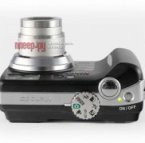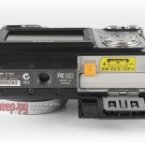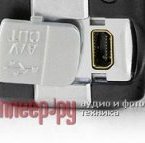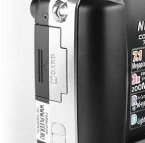Review Of Digital Cameras
 Governance
Governance
There is a large TFT monitor with 115,000 points and 2 inches diagonal. Not all the big mirror cameras have these size monitors. The picture on the screen is clear, and under the illumination, the image on the monitor is automatically illuminated.
The monitor's not turning, it's hard to get to the body. I personally consider such a design to be reliable and solid.
The optical detector is located above the monitor, in the left corner of the rear panel.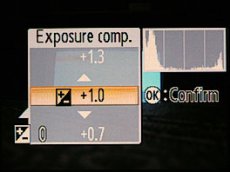 He's a little, but looking in his right eye is very comfortable-- the nose doesn't stick to the machine as it happens sometimes. There are two lights on the right of the detector. Lower, green, signals either autofocus readiness or the impossibility of focusing (usually in the case of a too close object) and the upper, red indicates the need to use the flash and its readiness to work.
He's a little, but looking in his right eye is very comfortable-- the nose doesn't stick to the machine as it happens sometimes. There are two lights on the right of the detector. Lower, green, signals either autofocus readiness or the impossibility of focusing (usually in the case of a too close object) and the upper, red indicates the need to use the flash and its readiness to work.
There's a button to remove the photos. She's safely away from the other buttons, which prevents her accidental engagement.
In the right upper corner there are two Zoom control keys (focus of the objective). The zooming range is between 7.8 and 23.4 mm, which is approximately 38-114 mm equivalent for prisoners. The facility uses a professional optical glass of Nikon ED with superlow dispersion. Personally, I think the best range of focus ranges is between 35 and 105 mm, but the range of 38 to 114 mm is quite typical for three-fold zum cameras.
The zium control keys in the scan mode change the size of the image, and screen clues are activated during the operation of the menu of the right clavicle ("T." There are small holes under the Zuma keys, where the built-in dynamics are located.
